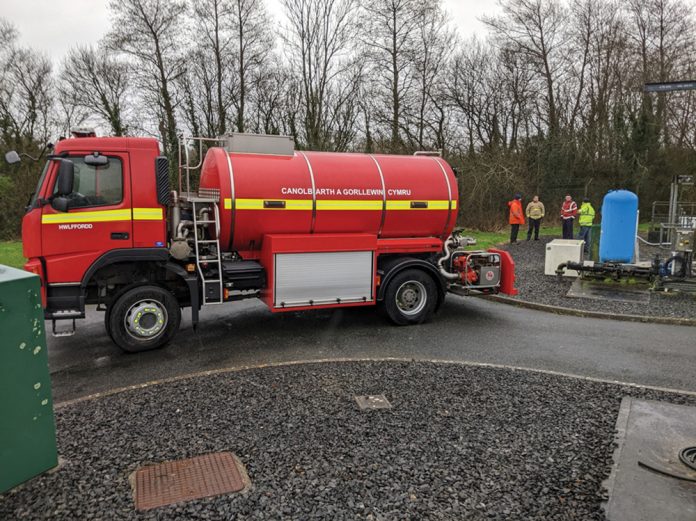Treated wastewater is being used in trials to tackle fires in Wales.
A pioneering partnership between Dwr Cymru Welsh Water, Natural Resources Wales, and Mid and West Wales Fire and Rescue Service is testing ultra-violet (UV tertiary) treated effluent water at fire incidents as an alternative to drinking and other water sources.
The average modern fire appliance has an 1,800-litre water capacity, and the large amounts required for incidents can cause issues like low water pressure and dirty water, depending on the location.
The initiative uses disinfected ultra-violet (UV tertiary) treated effluent water at incidents attended by the fire service crews. As well as reducing the impact on communities, the process aligns with the Service’s environmental objectives, helping ease reliance on clean water during a period of increased unpredictability for supply.
Using the treated effluent water will also help crews respond more efficiently to incidents. Where water supply is limited, water must be shuttled from various locations which can be up to an hour from the incident. Utilising the UV tertiary treated wastewater sites across Wales allows fire crews to collect water more efficiently and respond quicker.
A spokesperson for Dwr Cymru Welsh Water said, “We are fully supportive of this initiative to make available where practical treated wastewater effluent that has been through a UV disinfection plant as a source of water for firefighting purposes.
“By substituting this volume of water, which otherwise would have been taken from the potable water supply, it will help in the preservation of our supplies for customers especially in the face of increasing climate change impact on our natural resources.”
A spokesperson for Natural Resources Wales (NRW) added, “A Low-Risk Waste Recovery Operation has been approved and published by NRW allowing the use of UV treated final effluent from Dwr Cymru Welsh Water permitted Wastewater Treatment Works in emergency firefighting activities by the Fire and Rescue Service.”



